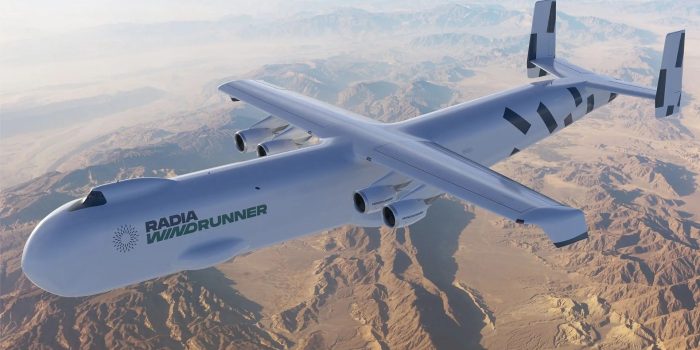Radia, a startup from Colorado focused on energy, is determined to make wind turbines more efficient and larger. Their latest project, the WindRunner, is a massive aircraft designed specifically to carry extremely large turbine blades. The goal is to transform the renewable energy industry by solving the difficult task of moving huge structures over land.

The WindRunner is truly remarkable in size, surpassing even the biggest commercial airplanes we know. It stretches out to 356 feet in length, stands at 79 feet tall, and spreads its wingspan to 261 feet. Compared to the Boeing 747-8, it’s much larger and can carry a whopping 80 tons – twelve times more than the Boeing 747. Because of its immense size, it requires special infrastructure. That means manufacturing sites need runways that are 6,000 feet long, specifically prepared to handle the WindRunner’s landings and takeoffs.

The primary mission of the WindRunner is to transport the gigantic blades of onshore wind turbines, which can reach lengths between 150-300 feet and weigh upwards of 35 tons. These massive dimensions present significant challenges for existing transportation methods, limiting the wider adoption of onshore wind farms. Addressing this logistical hurdle was the primary inspiration behind the WindRunner project.

Mark Lundstrom, Radia’s founder and an MIT-trained rocket scientist, spearheaded the meticulous design process of the WindRunner over seven years. Ensuring the structural integrity of the craft during landing and takeoff was a key priority. Beyond solving existing transportation constraints, the WindRunner’s ample capacity paves the way for developing even larger terrestrial turbines, potentially increasing power generation consistency by 20% and slashing energy costs by up to 35%.

The WindRunner project comes at a critical time for the renewable energy industry, especially as offshore wind power faces financial setbacks. By enabling the installation of massive turbine blades on land, WindRunner technology could transform land-based wind farms, doubling power generation and making wind energy competitive in previously unviable areas.

Radia aims to have the WindRunner operational within four years, with hopes of accelerating the growth of wind power. Beyond renewable energy, the aircraft’s massive capacity could find valuable applications in other sectors, including military equipment transport.
In conclusion, the WindRunner represents a pioneering solution to the transportation challenges hindering the widespread adoption of larger wind turbines on land. Its potential to transform the renewable energy landscape and make wind power more competitive underscores its significance in the quest for sustainable energy solutions.


